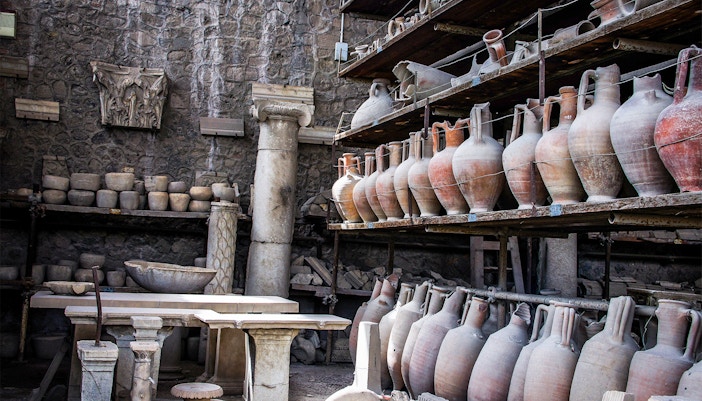History of the Pompeii Antiquarium
The Pompeii Antiquarium was originally housed in the Bourbon Palace of Naples. However, as the collection of unearthed artefacts grew from the ruins, the Pompeii Antiquarium needed a new home.
The dream turned into reality in 1988, with a modern and architecturally striking building opened near the entrance of the Pompeii archaeological site. It was a fitting end to the attraction's long and challenging journey, during which it suffered multiple closures.
The Antiquarium suffered heavy damage due to the World War II bombings and the 1980 earthquake, with both events leading to several months of closure. However, it was restored each time and stands as proof of Pompeii’s rich heritage.











